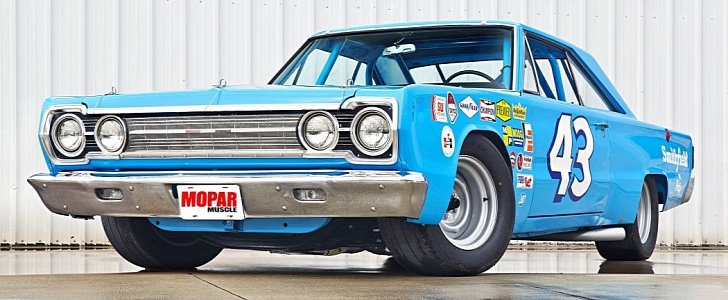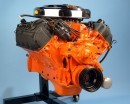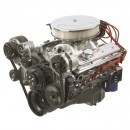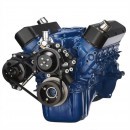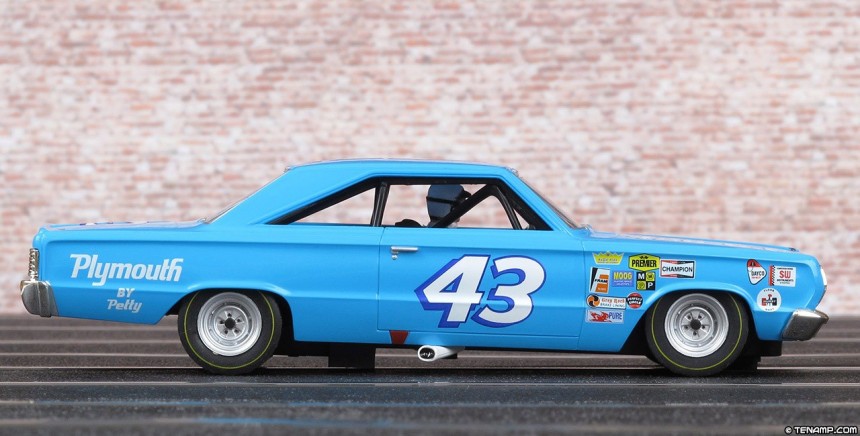First installed in a U.S.-made car by Hewitt Motor Company in 1907, producing around 60 horsepower, the V8 quickly became part of our culture and history.
Engines, following the basic rules of engineering, are mostly a negotiation exercise meaning that you have to compromise a lot in order to meet the required outputs and regulations. As a manufacturer, you constantly need to balance a whole chunk of factors to get a solution that is viable, reliable and nowadays also sustainable.
But things weren’t always so complicated. It used to be that an engine should follow 5 core principles: produce enough power to move the car, make the engine fit under the hood, come up with a design that manages to balance vibrations, have a not-so-alarming fuel economy, and keep research and development costs within ‘mass production’ parameters.
One of the designs that emerged after using these 5 directions was the V8. It was an instant hit, not that it was really good at following the majority of these rules, but it was good enough that it was able to set a benchmark for one of the best engine layouts.
Why did the V8 win our hearts so quickly though? Is it because we were suddenly faced with a middle class that had a desire for horsepower? Is it because reliability was on its way up? We’ll probably never know, but this specific layout could have been seen as the poor man’s performance package more often than we’d like to admit. It was not small, and it did not do great on fuel economy but it was cheap to produce, and the power was there.
Ah and the sound, that must have played a part in it. There aren’t many other engines that can make the sound of burning dinosaurs more appealing. Whether you prefer the high revving acoustics of an Italian car, or the low, throaty rumble of an old American muscle, the V8 sound is simply intoxicating.
Having said that, here’s our top 3 American built V8s that rocked the streets in the 60s and 70s.
Early performance specs were around 190 horsepower and 258 lb/ft but Ford progressively raised the power over the years to a maximum of around 306 hp in the 1965 Shelby GT350 (271 from Ford, the rest was Shelby magic).
The final year for the 289 V8 engine was in 1968 when they replaced it with more ‘modern’ engines. Throughout its life, the 289 was produced in millions of units and has become a favorite among Mustang owners. To paint a broader picture, this engine is loved so much that Ford still makes parts components for the 289 V8 to this day.
Rocking a steady 5.7-liters, the 350 achieved its displacement by using a 4 inch cylinder bore and a crankshaft stroke of 3.48 inches. The power that this engine produced often varied depending on what car model it was fitted on. For example, it produced 297 horsepower for the 1967 Camaro, and reached a maximum production power of 370 horsepower for the LT1 Corvette in 1970.
In the following year, 1965, Mopar launched a few drag racing cars with the 426 engine that was available to the public, to get the green light from NASCAR and lift the racing ban for the car, but unfortunately they had to sit the season out. Chrysler returned to NASCAR in 1966 and won countless races and numerous championships.
The engine was also available in Dodge and Plymouth B-Bodies for the general public from 1965 to 1971, producing a whooping 434 hp and 472 lb/ft of torque. Even by today’s standards, that’s a lot.
Most of us, and I mean car enthusiasts, are more focused on the upcoming and imminent death of the manual transmission, which now only finds its way in some “driver focused” cars, but the departure of the V8 may be deceptively sneaking up on us.
And there’s nothing much that we can do about it. There’s turbos and hybrids, full electric or hydrogen cars on our streets right now, none of which require a V8, and we simply cannot stand in front of evolution. Let’s just hope that in 15 years-time we’ll still be able to enjoy this thrill-giving piece of engineering. Time will tell.
But things weren’t always so complicated. It used to be that an engine should follow 5 core principles: produce enough power to move the car, make the engine fit under the hood, come up with a design that manages to balance vibrations, have a not-so-alarming fuel economy, and keep research and development costs within ‘mass production’ parameters.
One of the designs that emerged after using these 5 directions was the V8. It was an instant hit, not that it was really good at following the majority of these rules, but it was good enough that it was able to set a benchmark for one of the best engine layouts.
Why did the V8 win our hearts so quickly though? Is it because we were suddenly faced with a middle class that had a desire for horsepower? Is it because reliability was on its way up? We’ll probably never know, but this specific layout could have been seen as the poor man’s performance package more often than we’d like to admit. It was not small, and it did not do great on fuel economy but it was cheap to produce, and the power was there.
Ah and the sound, that must have played a part in it. There aren’t many other engines that can make the sound of burning dinosaurs more appealing. Whether you prefer the high revving acoustics of an Italian car, or the low, throaty rumble of an old American muscle, the V8 sound is simply intoxicating.
Having said that, here’s our top 3 American built V8s that rocked the streets in the 60s and 70s.
Ford 289 CID
1964 Mustang. We could leave it at that, but that would not do justice for this masterpiece. First introduced in 1963, the 289 CID 4.7 liter engine was a unit designed to be an entry level V8 for all models in their lineup. While it sure started like that, it quickly became Ford's V8 90 degree overhead valve engine that everyone wanted. It was reliable, it was fuel efficient as well as economical to maintain, had adequate power and was easily modified. Talk about recipe for success.Early performance specs were around 190 horsepower and 258 lb/ft but Ford progressively raised the power over the years to a maximum of around 306 hp in the 1965 Shelby GT350 (271 from Ford, the rest was Shelby magic).
The final year for the 289 V8 engine was in 1968 when they replaced it with more ‘modern’ engines. Throughout its life, the 289 was produced in millions of units and has become a favorite among Mustang owners. To paint a broader picture, this engine is loved so much that Ford still makes parts components for the 289 V8 to this day.
Chevrolet 350 Small Block
The 350 engine is one Chevrolet's most popular, mass-produced engines, and considered one of the most well-known, sought after engines of all time. Some might go so far as stating that it’s not unreasonable to say the Chevrolet small block V8 changed the face of automotive engine history. Innovative and technologically advanced for the time, it greatly influenced future V8 engine designs, both inside General Motors and among the competition as well.Rocking a steady 5.7-liters, the 350 achieved its displacement by using a 4 inch cylinder bore and a crankshaft stroke of 3.48 inches. The power that this engine produced often varied depending on what car model it was fitted on. For example, it produced 297 horsepower for the 1967 Camaro, and reached a maximum production power of 370 horsepower for the LT1 Corvette in 1970.
Chrysler 426 HEMI
Nicknamed the Elephant because of its massive size, figures and weight, this engine is believed to have emerged way ahead of its time. With NASCAR roots, drag racing history and an overall racing pedigree, this engine was an instant hit. The 426 HEMI was so dominant in its first year of racing, that NASCAR changed its rules for engines, following the 1-2-3 finish at Daytona in 1964, eliminating the use of limited production race-only units and requiring all powerplants used in the racing car to be available in production vehicles as well.In the following year, 1965, Mopar launched a few drag racing cars with the 426 engine that was available to the public, to get the green light from NASCAR and lift the racing ban for the car, but unfortunately they had to sit the season out. Chrysler returned to NASCAR in 1966 and won countless races and numerous championships.
The engine was also available in Dodge and Plymouth B-Bodies for the general public from 1965 to 1971, producing a whooping 434 hp and 472 lb/ft of torque. Even by today’s standards, that’s a lot.
Most of us, and I mean car enthusiasts, are more focused on the upcoming and imminent death of the manual transmission, which now only finds its way in some “driver focused” cars, but the departure of the V8 may be deceptively sneaking up on us.
And there’s nothing much that we can do about it. There’s turbos and hybrids, full electric or hydrogen cars on our streets right now, none of which require a V8, and we simply cannot stand in front of evolution. Let’s just hope that in 15 years-time we’ll still be able to enjoy this thrill-giving piece of engineering. Time will tell.
